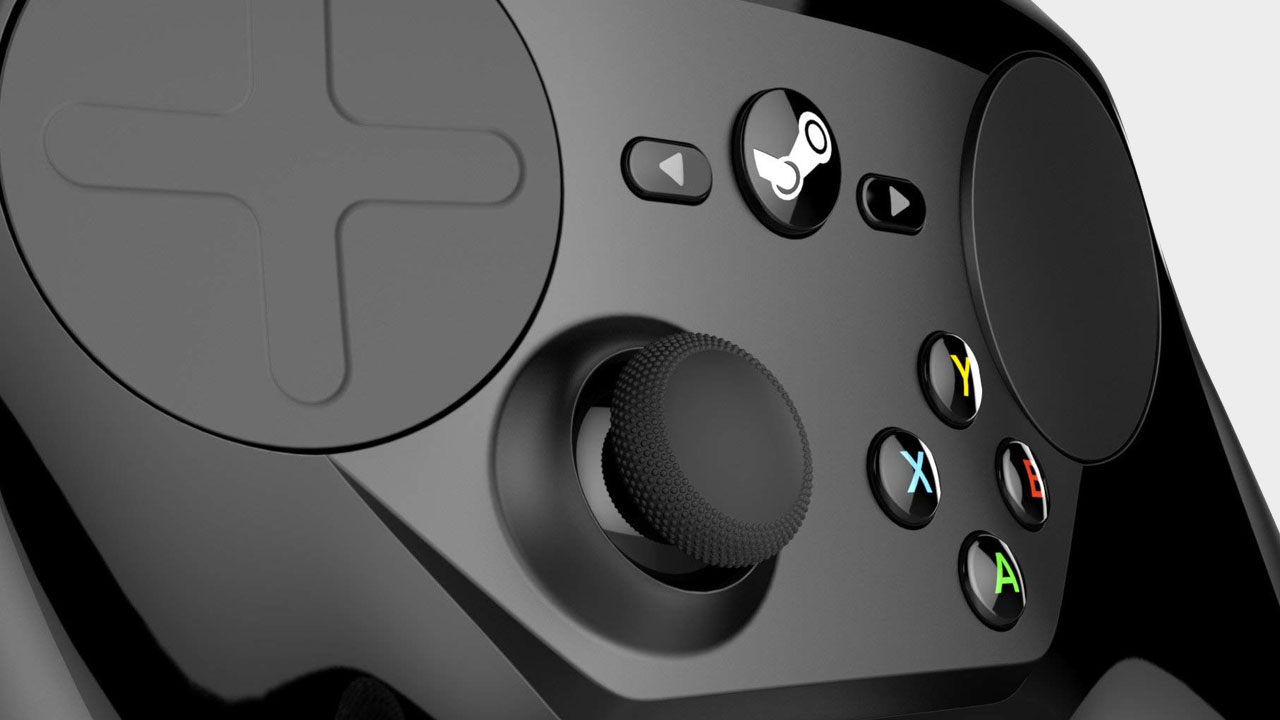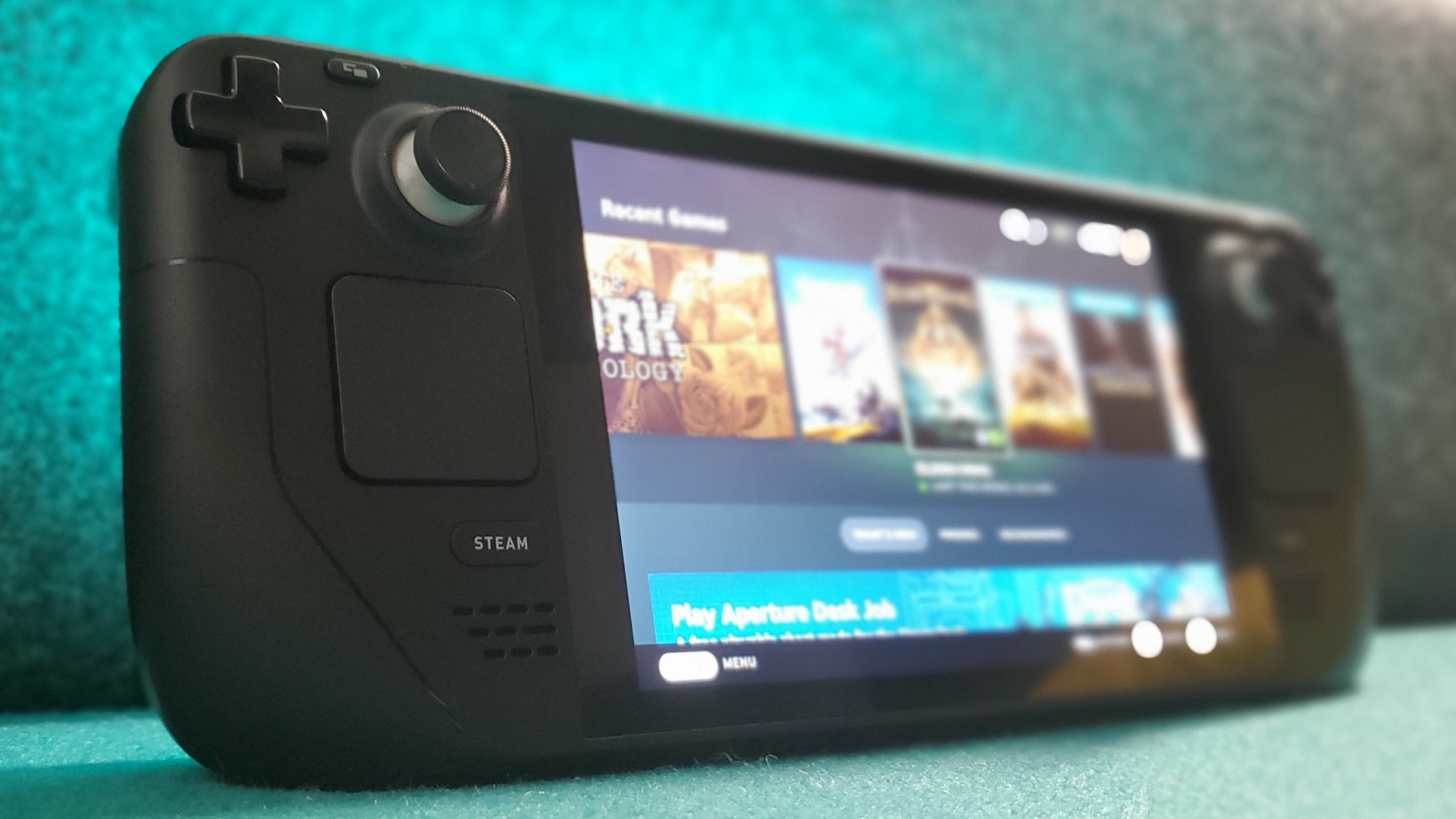Steam Controller Stans are the unsung heroes of gaming on the Steam Deck
I'm sorry for all the mean things I said about you, I now appreciate all you've done for handheld PC gaming.
I feel like I need to apologise. I've said a lot of mean things about the Steam Controller, and actually about those who picked Valve's pad as a hill to die on, too. But having spent a lot of time with the Steam Deck, trying to get old games running well on the device, I've come to regard you Steam Controller fetishists with something akin to admiration.
Of course, I still think the pad is a horrid, hollow, waste of cheap plastic. I've been told many times that it just takes some practice, that really it's good and is actually me who is instead a waste of skin and organs. I'm just not feeling it. But the efforts you guys have gone to—crafting perfectly tuned control profiles for myriad games across the breadth of the expansive Steam library, endlessly justifying your Steam Controller purchase to yourself and anyone who will listen—have all made my game time on the Deck far more enjoyable.
If it wasn't for you I wouldn't just be able to jump into practically any game on the Steam Deck and be totally confident I'll be able to get to grips with its controls. Sure, games designed with traditional gamepads in mind will translate onto the Deck's built-in buttons, sticks, and triggers, but there are a whole load of PC games that just don't play nice with a controller. And those need some work to get running nicely on the Deck.
Or would do if it weren't for you lovely Steam pad peops. Yes, I now recognise your greatness.
According to the latest Steam year in review stats, controllers are being used in just over 10% of daily sessions, likely with mouse and keyboard taking up the rest of the time. In the majority of gaming sessions on Steam, therefore, you're going to need something the Deck's more traditional controls cannot cater for.
But that's where the trackpads and the gyro inputs come to the fore. As do the impressively detailed, and comprehensive customisation options available within Steam. It's this per-game input customisation that you Steam Controller aficionados have taken to your hearts in getting the most out of the Valve pad, and means that I can boot up Starbound and FTL and instantly have access to bespoke layouts that gel perfectly with the Deck from inside the game.
So, thank you. And sorry for all the horrible things I've said about you.
The biggest gaming news, reviews and hardware deals
Keep up to date with the most important stories and the best deals, as picked by the PC Gamer team.

If Steam Machines hadn't been such a complete mess the Controller might well have had a place
The Steam Controller was designed for a different time, almost an entirely different reality in fact. It was made for an era where PCs were in every living room, connected up to a big-screen TV running Big Picture Mode, from a wee Steam Machine sporting the Linux-based SteamOS.
And in that mythical realm, the Controller makes some sense. The trackpads, the inputs which truly mark it out from the crowd, were created to emulate mouse movements and allow you to play strategy games, and other classically PC games on a TV from the comfort of your sofa. And if I were into playing Crusader Kings III from my sofa, then I'd probably want the Steam Controller rather than a monstrous wireless mouse and keyboard setup on my lap. I mean, that's just degrading.
As an aside, those trackpads are actually more like trackballs. That's something I've only discovered sitting on the sofa idly fiddling with my Deck, whizzing the cursor across the screen and enjoying the simulated haptic 'roll' of a trackball.
If Steam Machines hadn't been such a complete mess the Controller might well have had a place. But SteamOS wasn't finished in time for launch, which meant the third-party Steam Machines came out with Windows baked in, weren't really that interesting, and ultimately made no inroads into the living room environment.
After that Gabe's grab pad felt almost entirely pointless when sat at a desk instead, with a mouse and keyboard within easy reach.
But still, you few who jumped onboard the Steam Machine dream and paid out for a Steam Controller weren't content to just put the pad to one side and move on with your lives. No—bless you—you struggled on to find ways to play games with already perfectly fine control schemes, created intricate profiles, and uploaded them to the cloud so other believers could benefit from your work.
And now anyone who's bought, or reserved, or plans to pick up a Steam Deck in the future, is going to say a little prayer to you unsung heroes.

We learned so much from the Steam Controller
Greg Coomer, Steam Deck designer, Valve
Are you the true heroes of the Steam Deck? No, that's still the developers and designers, but they're very much aware of just what they owe the Steam Controller Stans, too.
"Yeah, that feels like it was legitimately a collaboration," Steam Deck designer Greg Coomer tells me. "The community helped innovate a huge amount in just how we thought about controllers.
"We learned so much from the Steam Controller, and we continue to, you know. It's a supported device in a big way on Steam still… even though we don't currently have it in the Steam Store."
And you've got to think the same people who have been obsessively profiling games for the Controller are going to be first in line for a Deck, and will continue to iterate on the huge range of control layouts already out there.
"I'm excited to see what the community does with that stuff going forward," says designer Jay Shaw, "once they have Deck in hand, and they can, you know, start messing with it."
And who knows, I might even join their ranks now. I mean, I've no idea where my Steam Controller is these days, and there's no way I'd ever use it on a desktop PC, but I feel like I've got a pretty damned fine Football Manager control layout nailed for the Steam Deck, and I think the world needs to know about it.

Dave has been gaming since the days of Zaxxon and Lady Bug on the Colecovision, and code books for the Commodore Vic 20 (Death Race 2000!). He built his first gaming PC at the tender age of 16, and finally finished bug-fixing the Cyrix-based system around a year later. When he dropped it out of the window. He first started writing for Official PlayStation Magazine and Xbox World many decades ago, then moved onto PC Format full-time, then PC Gamer, TechRadar, and T3 among others. Now he's back, writing about the nightmarish graphics card market, CPUs with more cores than sense, gaming laptops hotter than the sun, and SSDs more capacious than a Cybertruck.

